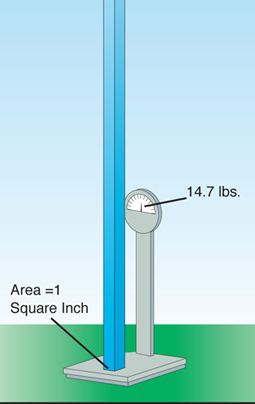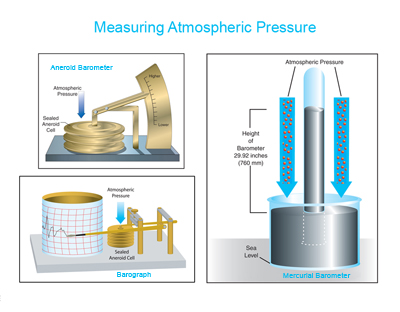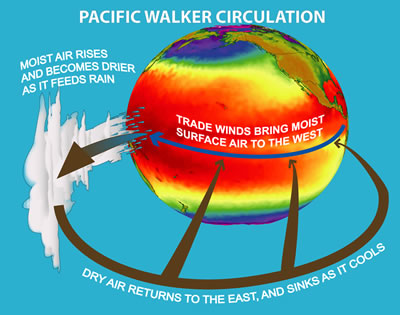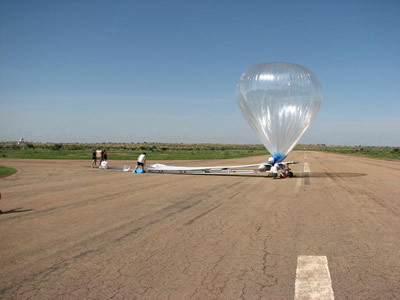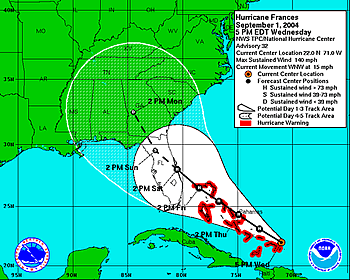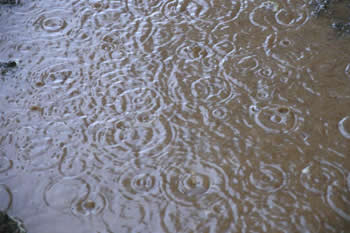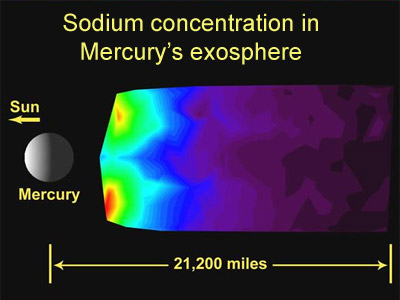Click on image for full size
Courtesy of the FAA
Atmospheric Pressure
Pressure is an idea scientists use to describe how gases and liquids "push" on things. The atmosphere has pressure. If you imagine a column of air that is 1 inch square and goes from the Earth's surface all the way up through the atmosphere, the pressure of the air in that column is 14.7 pounds per square inch. Now that may seem like a lot of pressure pressing down on your body if you think of how many square inches it takes to cover your body! But pressure is a force that is spread out over an area. So all of that atmospheric pressure is not a downward force, but a force spread over the entire skin, hair, fingernails and so on.Atmospheric pressure is not constant. It is affected by altitude and temperature. It is also affected by whether or not a low pressure system is coming through; or that there is a high pressure system nearby.
The air pressure in Earth's atmosphere is pretty strong when you are near sea level. When you go higher up, in an airplane or to the top of a mountain, there is less pressure. At the surface of the Earth, the air is quite dense. At higher elevations, the air is less dense. Therefore, scientists say that atmospheric pressure varies directly with air density.
Temperature also affects atmospheric pressure. Warmer temperatures will increase atmospheric pressure.
There is an international Standard set that says at sea level with a temperature of 15oC (59oF), the atmospheric pressure will be 29.92 inches of Mercury (1013.2mb). If you are not at sea level at those Standard temperatures, the atmospheric pressure will measure differently.
The highest recorded atmospheric pressure, 32.06 inches of Mercury, occurred at Tosontsengel, Mongolia, December 19, 2001. The lowest pressure (outside of those measured in tornadoes) was 25.69 inches of Mercury in the Western Pacific during Typhoon Tip on October 12, 1979.


